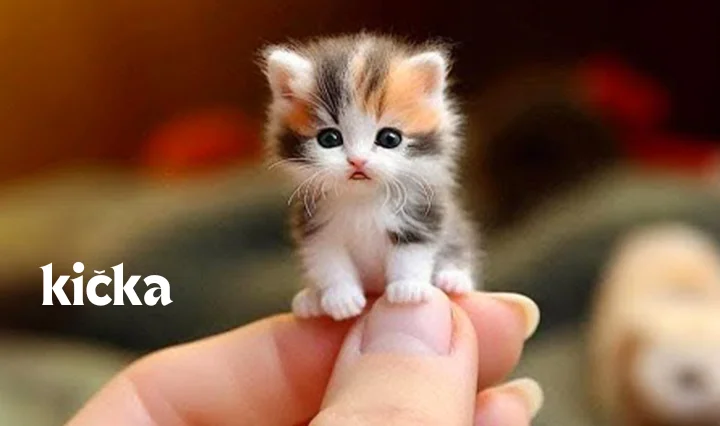The Hidden Gem of Craftsmanship in Eastern Europe

Introduction
Ever stumbled upon something so unique that you couldn’t help but be fascinated by it? That’s exactly the kind of allure kička holds. If you’ve never heard of it, don’t fret—you’re in for a treat! This article is all about diving deep into the heart of kička, an often overlooked yet incredibly rich tradition that’s been passed down through generations.
What’s so special about it, you ask? Well, isn’t just a word; it’s a vibrant piece of culture that intertwines craftsmanship, history, and a sense of community. Whether you’re a culture enthusiast, a history buff, or just someone who loves discovering something new, kička is bound to capture your interest.
So, buckle up as we embark on this journey to explore the origins, significance, and contemporary relevance of. By the end, you’ll have a newfound appreciation for this remarkable tradition.
What Is Kička?
The Heart of Craftsmanship
At its core, kička represents a traditional form of craftsmanship. It’s not just any kind of craft—it’s a meticulous, hands-on process that involves creating intricate designs, usually in textiles or ceramics. But here’s the thing: it’s not just about the end product. The process itself is steeped in history, often reflecting the cultural identity of the region from which it originates.
When we talk about it, we’re referring to more than just an item; we’re talking about a piece of art that tells a story. Each thread, each stroke of the brush, is infused with meaning and significance.
A Tapestry of Culture
Beyond craftsmanship, is deeply embedded in cultural practices. Imagine attending a local festival where the entire community comes together to celebrate. plays a pivotal role in such events, often used in costumes, decorations, or even ceremonial objects. It’s a way for people to express their cultural heritage, and it serves as a symbol of pride and identity.
In many ways, kička acts as a bridge between the past and the present, allowing communities to preserve their traditions while also adapting them to modern times.
The Origins of Kička
From Humble Beginnings
The origins are humble as they are fascinating. It all started in small villages where artisans would spend hours, sometimes even days, crafting these intricate pieces. The techniques were passed down from generation to generation, often kept within families or tight-knit communities.
Interestingly, the word itself is believed to have roots in the local dialects of Eastern Europe. It’s a term that has evolved, but its essence remains unchanged: it’s about dedication, skill, and a deep connection to one’s heritage.
Evolution Over Time
As with anything that’s been around for centuries, kčka has seen its fair share of evolution. What started as a purely functional craft—think clothes and utensils—gradually morphed into something much more elaborate. Over time, artisans began to experiment with new materials, designs, and techniques, transforming them into the intricate art form we know today.
But here’s the kicker: despite all the changes, the core principles have remained the same. It’s still about craftsmanship, culture, and community.
The Significance of Kička in Modern Times
Keeping Traditions Alive
In today’s fast-paced, digital world, traditions like kička offer a much-needed respite. They remind us of the importance of slowing down, of taking the time to create something beautiful with our hands. For many communities, kička is a way to keep their traditions alive, passing on not just the skills but also the values that come with them.
What’s more, kička has found a new audience among those who are tired of mass-produced goods and are looking for something more authentic. In this sense, is experiencing a renaissance of sorts, with artisans and enthusiasts alike rediscovering its charm.
The Role of Kička in Sustainable Living
Another reason why kička is gaining popularity is its alignment with the principles of sustainable living. Unlike mass-produced items that often contribute to environmental degradation, is all about sustainability. The materials are often locally sourced, and the process itself is eco-friendly.
So, if you’re passionate about sustainability, incorporating it into your life could be a great way to support local artisans while also reducing your carbon footprint.
Incorporating Kička Into Your Life
Where to Find Kička
Interested in bringing a piece of it into your home? You’re in luck! Thanks to the internet, finding authenticity has never been easier. Many artisans now sell their creations online, allowing you to shop from the comfort of your own home.
Here’s a quick list of where you can find kička:
- Online marketplaces: Websites like Etsy often feature handmade items.
- Local craft fairs: If you prefer shopping in person, craft fairs are a great place to discover unique pieces.
- Specialty shops: Some stores specialize in traditional crafts, offering a curated selection of kička.
How to Style Kička
Not sure how to incorporate it into your life? Don’t worry, I’ve got you covered. Here are a few ideas to get you started:
- Home décor: Use textiles as wall hangings or table runners to add a touch of tradition to your home.
- Fashion accessories: scarves or jewelry can be a great way to make a fashion statement while showcasing your appreciation for craftsmanship.
- Gifts: Handmade kička items make for thoughtful, one-of-a-kind gifts that are sure to be cherished.
FAQs About Kička
1. What materials are commonly used in ?
a often involves materials like wool, cotton, and clay, depending on whether the craft is textile-based or ceramic.
2. Is kička only found in Eastern Europe?
While kička has its roots in Eastern Europe, similar forms of craftsmanship can be found in various cultures around the world.
3. Can I learn to create kička myself?
Absolutely! Many communities offer workshops or online classes where you can learn the techniques involved in kička.
4. How do I know if an item is authentic ?
Authentic is usually handmade and carries the unique style of the region it comes from. Look for items that have detailed craftsmanship and ask the seller about the origin of the piece.
5. Is expensive?
The cost can vary depending on the complexity of the design and the materials used. However, because it is handmade, it’s generally more expensive than mass-produced items.
Conclusion
So, there you have it—a deep dive into the world of kika. This tradition is much more than just a form of craftsmanship; it’s a living, breathing piece of culture that continues to inspire and captivate people around the world.
Whether you’re drawn to it for its aesthetic appeal, its cultural significance, or its alignment with sustainable living, there’s no denying that it’s something truly special. So why not explore kička further and see how it can add a touch of tradition and craftsmanship to your life?
With, you’re not just buying an item; you’re becoming a part of a story that spans generations. Now, that’s something worth celebrating!



